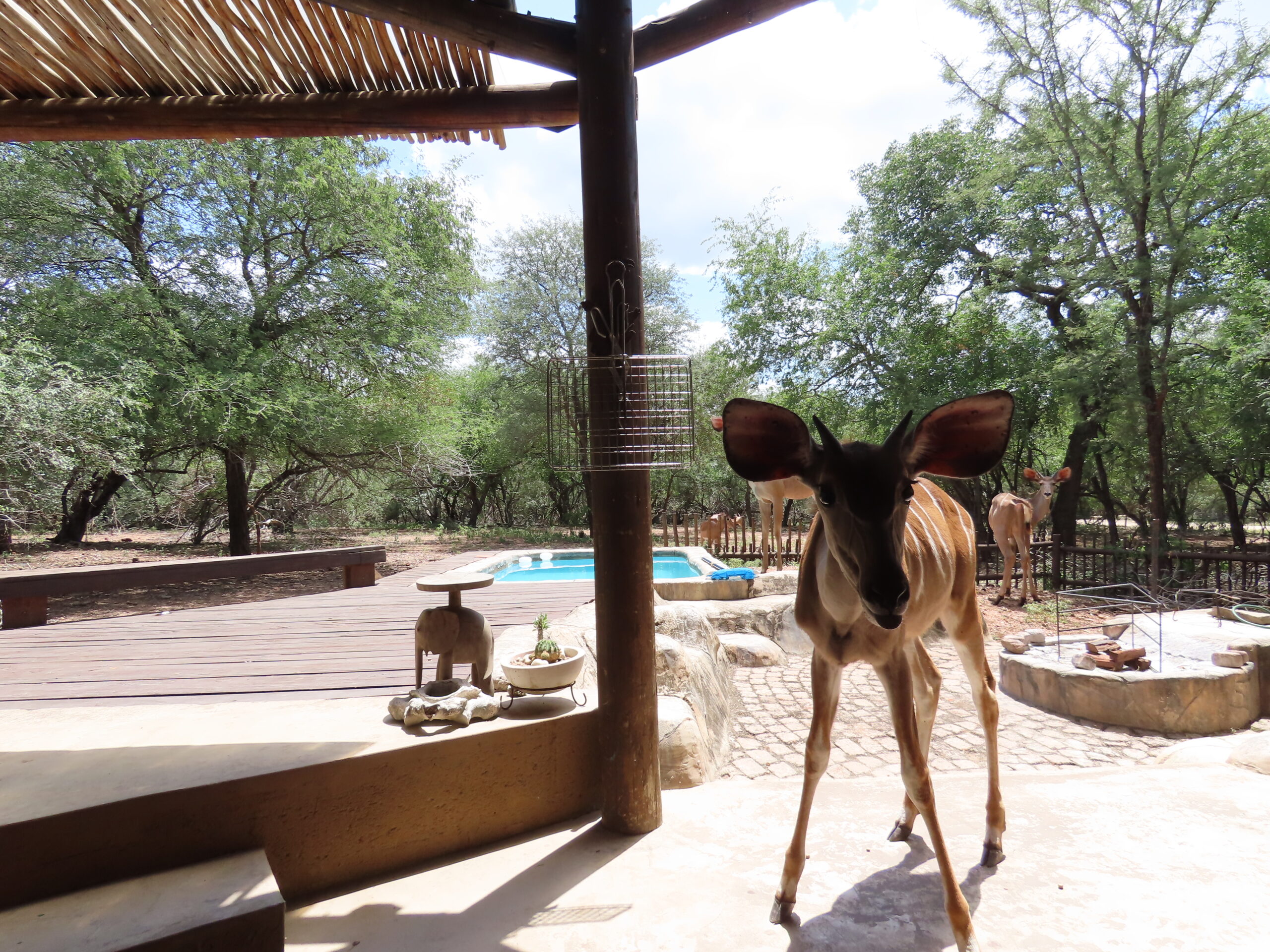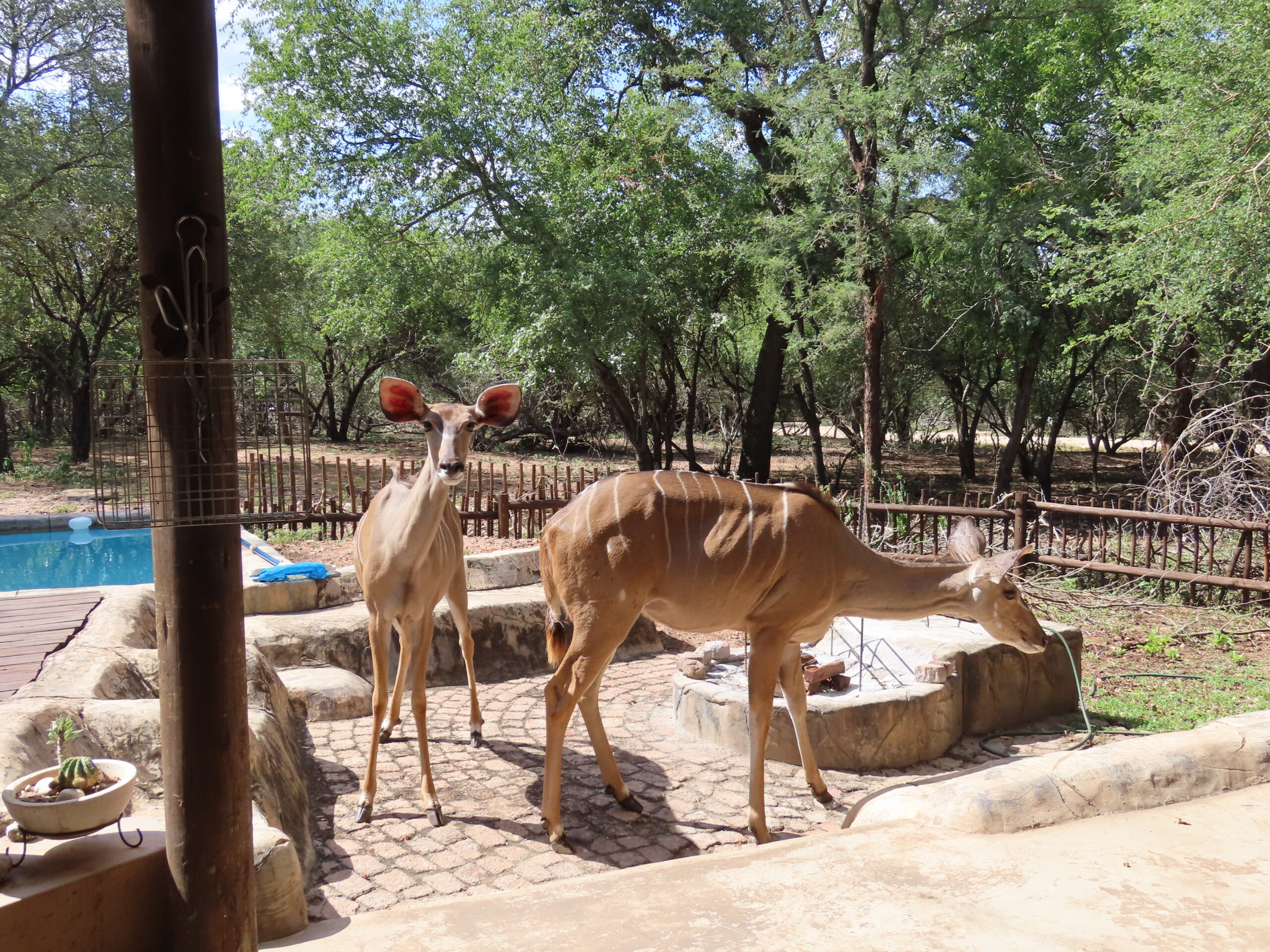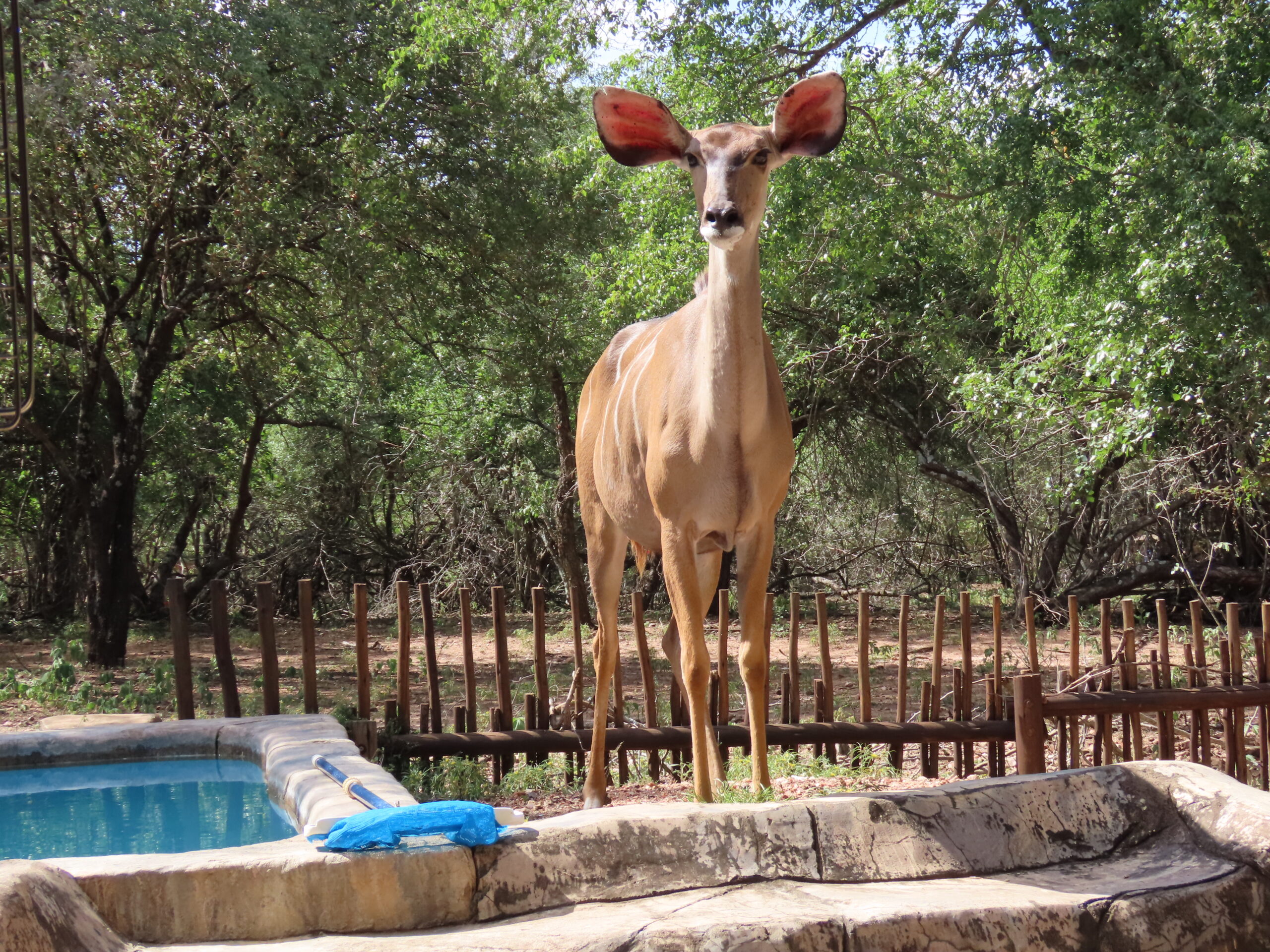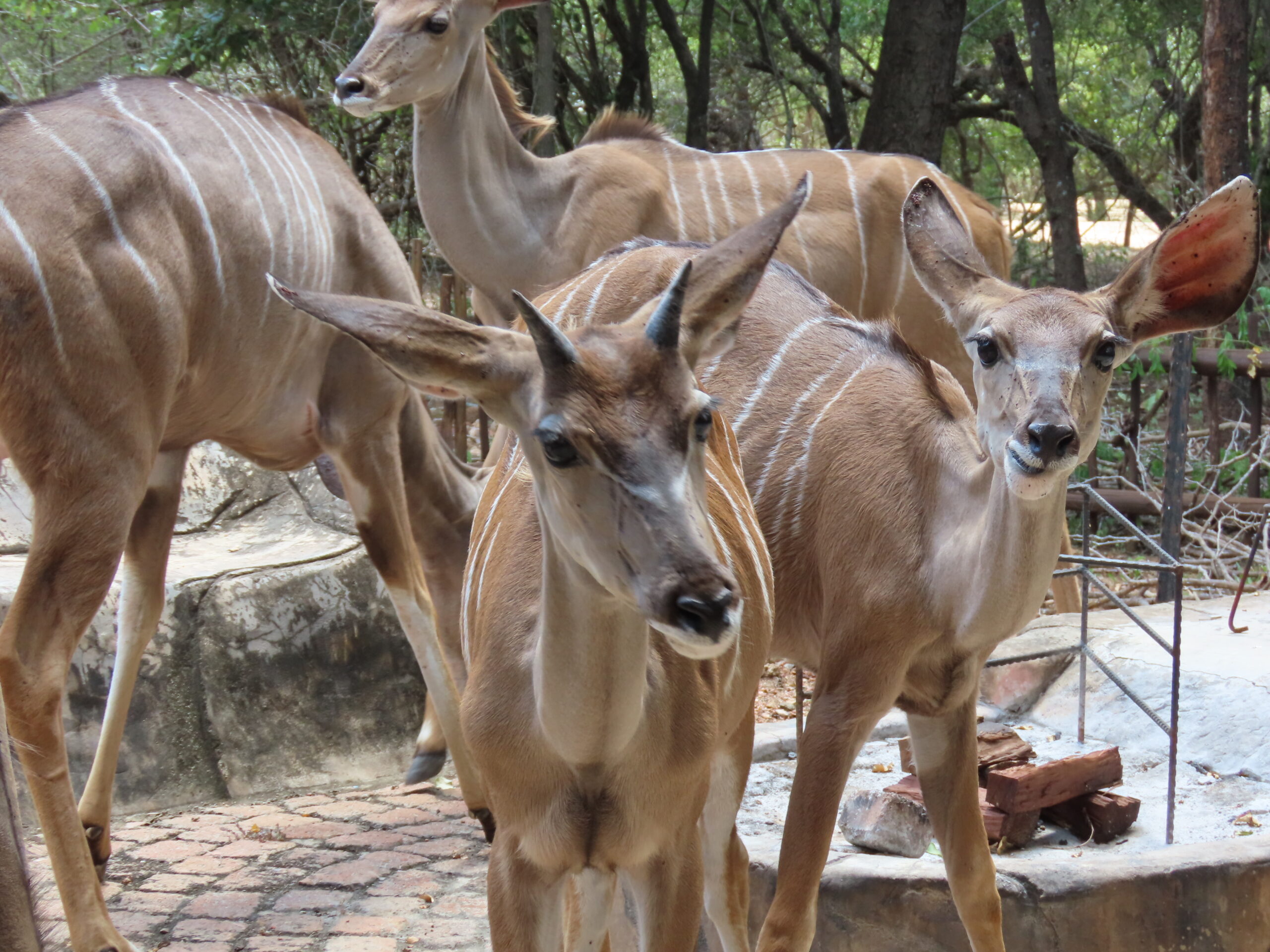
Last night, we both had trouble staying awake. Finally, we drifted off, both of us awakening around 4:00, due to the ten-hour time difference between Nevada and South Africa. We make every effort to avoid days-long jet lag, as described below.

Jet lag is a temporary sleep disruption caused by a mismatch between your body’s internal clock and the new time zone when traveling across multiple time zones.
- Daytime fatigue
- Difficulty sleeping or waking up
- Poor concentration and memory
- Headaches
- Stomach cramps, diarrhea, or constipation
- Reduced physical activity
- Crossing multiple time zones disrupts your circadian rhythms, which regulate your sleep-wake cycle.
- Traveling from west to east can cause more bothersome symptoms.
- Older people seem to be hit harder by jet lag.
-

An adorable young male kudu with budding horns. Only males grow horns. They are called horns instead of antlers since they do not shed them.
After two nights’ sleep, we feel rested today and back to normal. We always try to stay on a schedule commensurate with our location at any given time, as hard as that may be.

On another note, our dear friends Kathy and Don are on their way here from even further away than we were in Nevada. They are coming from Hawaii, which is at least a 40-hour journey. I’m sure we won’t see them for a few days, and they, too, will need a few days to catch up on sleep. We haven’t seen them since November 2021 but have stayed in close touch all this time.

As for our current experiences, we adjust well to every moment of getting acclimated to life in the bush. We grocery shopped at the new Spar/Save-Mor store in Marloth Park yesterday. I expected a much bigger store, but I was wrong. Many products would work for most tourists staying for a few weeks, for the locals, but not quite enough for our way of eating.

For example, I use sour cream or plain Greek yogurt to make salad dressing for the salads we eat most nights with dinner. Neither of these items was available, but I know we can get sour cream at the Spar Market in Komatipoort. It’s unlikely that we will find unsweetened Greek yogurt in any markets.

We’ll head to Komatipoort on Monday to the big Spar Market to get everything we need. They even have a health food section that has many items we use. Today, when Tom gets his haircut, I’ll shop in The Butchery meat market, which is located in the same shopping area as the hair salon.

We don’t expect everything here to be comparable to what’s available in the US. Instead, we find alternative options that work just fine, which is often the case when we visit other countries. It’s all a part of the nomadic lifestyle.

Last night, for dinner, we made porterhouse steaks on the braai with rice (for Tom) and salad for both of us. See our food photos below. Tom drank a Lion beer, his favorite here, and I had a small glass of Four Cousins Skinny Red wine, which can only be purchased in South Africa. What a treat that was!

Soon, we’re off for Tom’s much-needed haircut and the meat market after which we’ll return to the wonderful Ratel house to relish the remainder of the day with our many animal friends. Enjoy our new photos minus the blur in yesterday’s photos.

Be well.
Photo from ten years ago today, March 5, 2015:
|
|


